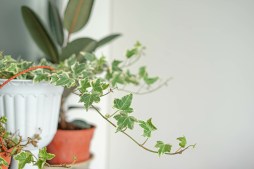Is Misting Your Plants Really Helpful? What Science Says

Misting plants is a popular practice among plant enthusiasts, often recommended as a way to increase humidity and keep leaves clean. But does misting truly benefit your plants, or is it just a gardening myth? In this article, we’ll explore the science behind misting and help you understand whether this technique is worth incorporating into your plant care routine.
What Is Misting and Why Do People Do It?
Misting involves spraying a fine mist of water onto the leaves of plants using a spray bottle or specialized mister. Many gardeners believe that misting can increase humidity around the plant, reduce dust buildup on leaves, and help prevent pests. It’s especially common for tropical plants that thrive in humid environments to be misted regularly to mimic their natural habitats.
Does Misting Actually Increase Humidity Levels?
While misting temporarily adds moisture to the air surrounding the plant, its effect on overall humidity is usually short-lived. The tiny droplets evaporate quickly, meaning that unless you’re in an enclosed space with little airflow, the ambient humidity won’t rise significantly or remain elevated for long. For lasting humidity improvements, other methods like using a humidifier or pebble trays with water are more effective.
Can Misting Help Plants Absorb Water Through Leaves?
Plants primarily absorb water through their roots rather than their leaves. Although some species can absorb small amounts of moisture through leaf surfaces under specific conditions (a process called foliar absorption), relying on misting as a significant source of hydration isn’t effective for most houseplants. Proper watering at the soil level remains essential for healthy growth.
Are There Any Downsides to Misting Plants?
Misting can sometimes cause problems if done excessively or incorrectly. Constant wetness on leaves may encourage fungal diseases like powdery mildew or promote pests such as spider mites in some cases. Additionally, if hard water is used for misting, mineral deposits might accumulate on leaf surfaces over time. Therefore, it’s important to use distilled or filtered water when possible and allow leaves to dry between sessions.
When Is Misting Beneficial and How Should You Do It?
Misting can be helpful in certain situations: for tropical plants that prefer high humidity (like ferns or orchids) during dry indoor conditions; when combined with other humidity-boosting techniques; or simply for cleaning dust off larger-leafed plants occasionally. To maximize benefits while minimizing risks, mist in the morning so leaves dry throughout the day and avoid frequent heavy applications.
In summary, while misting your plants isn’t a cure-all solution, it can provide some benefits if done thoughtfully alongside proper watering and environmental care. Understanding when and how to use this technique ensures your green friends stay healthy without falling victim to common pitfalls.
This text was generated using a large language model, and select text has been reviewed and moderated for purposes such as readability.


